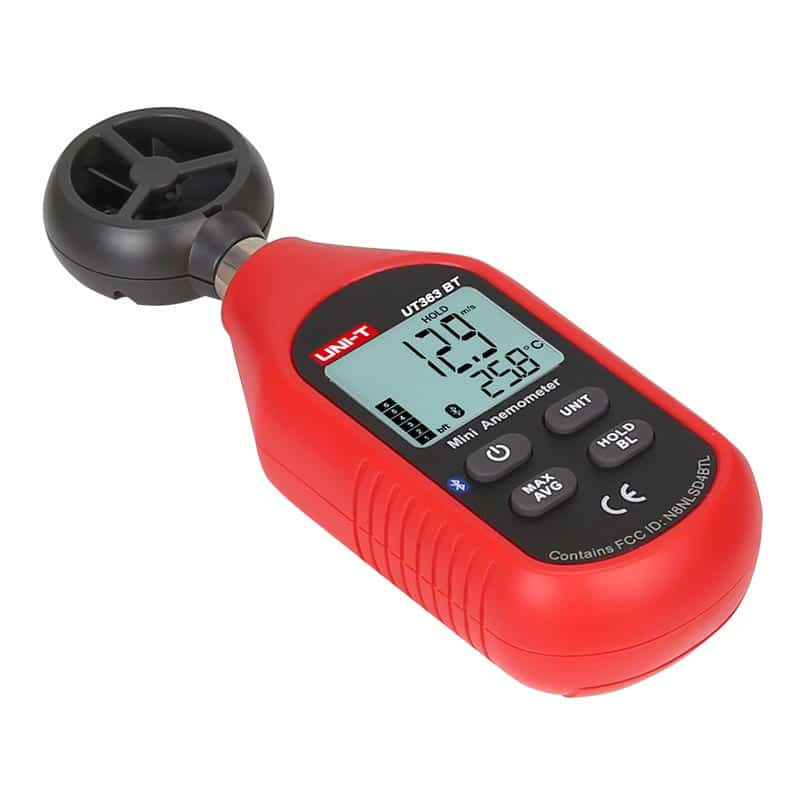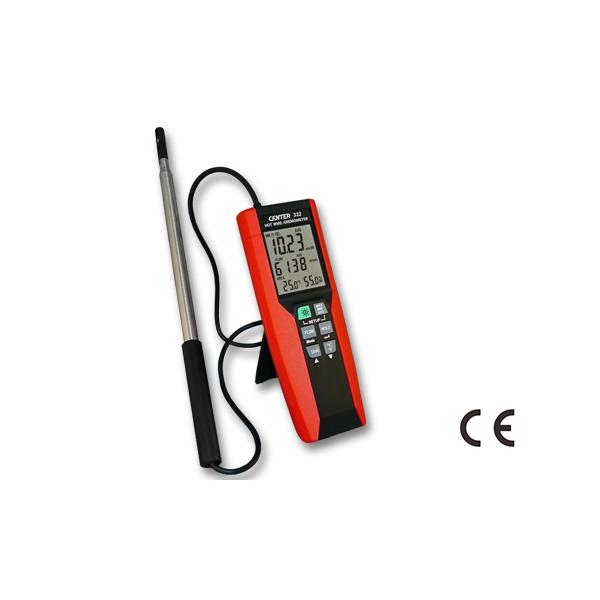All You Need to Understand About Anemometers: Exactly How They Work, Why They Issue, and Where to Use Them
Anemometers, though typically overlooked in the realm of scientific instruments, play a critical role in various fields, providing useful insights into wind speed and air flow patterns. As we dig right into the details of anemometer technology, we will uncover the inner workings of these devices, their importance, and the crucial factors to consider when choosing the ideal anemometer for details applications.

Anemometer Fundamentals
A necessary tool utilized to gauge wind speed and instructions, the anemometer plays an important duty in meteorology and numerous markets. An anemometer typically is composed of three or four mugs that rotate in the wind, a vane that directs into the wind, and sensing units to track the rotations or activities.
There are different kinds of anemometers readily available, including cup anemometers, vane anemometers, hot-wire anemometers, and sonic anemometers, each with its special features and applications. Cup anemometers are frequently used for fundamental wind rate dimensions, while vane anemometers are preferred for directional measurements.
Principles of Anemometer Operation
Structure on the fundamental understanding of anemometer essentials, the concepts of anemometer procedure clarify the mechanics behind wind speed and direction measurements. Anemometers operate on the principle of airflow impacting a sensor, causing it to rotate. Cup anemometers, for circumstances, have 3 or even more mugs that catch the wind, creating them to rotate much faster as the wind rate rises. The turning rate is then exchanged a wind speed dimension. Vane anemometers, on the various other hand, make use of a tail or a probe that straightens itself with the wind instructions, supplying a measurement of wind direction based on the orientation of the sensor. Hot-wire anemometers rely upon a warmed wire that cools down as wind passes over it, with the rate of cooling determining the wind speed. Ultrasonic anemometers step wind speed and instructions by evaluating the time it takes for ultrasonic signals to take a trip in between transducers. Comprehending these principles is vital for trustworthy and precise wind measurements in numerous applications.
Value of Anemometers
The value of anemometers in meteorology and numerous markets can not be overstated. Anemometers play a crucial function in measuring wind rate and direction, supplying important data for climate forecasting, environment research studies, environmental surveillance, and air travel procedures. Meteorologists rely on anemometers to collect accurate wind information, helping them comprehend weather patterns, forecast storms, and problem timely warnings to the general public. In markets such as building, farming, renewable resource, and maritime procedures, anemometers are used to enhance procedures, guarantee security, and raise efficiency. For instance, wind ranch operators use anemometers find more information to examine wind problems and take full advantage of electricity production from wind turbines. In the maritime field, anemometers aid ship navigation by giving real-time wind info to captains, assisting them make informed decisions to make sure secure trips. Overall, anemometers are vital devices that add significantly to safety, effectiveness, and educated decision-making in weather forecasting and a variety of markets.
Applications Across Numerous Industries
In the renewable power field, anemometers play a vital duty in analyzing wind conditions for wind ranch positionings, guaranteeing ideal power manufacturing. Industries like construction and mining utilize anemometers to keep track of wind rates, vital for safety protocols, specifically when functioning at elevations or in open-pit mines where solid winds can posture threats. In farming, anemometers help farmers in handling crop splashing by giving real-time information on wind rate to prevent drift.

Picking the Right Anemometer for Your Demands
For general purposes, a mug anemometer is ideal for gauging wind rate, while a vane anemometer supplies wind direction data. Hot-wire anemometers are perfect for low airspeed measurements, and ultrasonic anemometers offer high accuracy and sturdiness.

Verdict
In verdict, anemometers play a crucial duty in determining wind speed and instructions across numerous look here markets. Understanding the concepts of anemometer operation is crucial for choosing the best tool for particular demands. From weather forecasting to aviation, anemometers are important devices for making sure and accumulating precise data safety in various applications. When choosing the most appropriate tool for measuring wind problems., it is vital to think about the significance of anemometers in order to make enlightened decisions.
There are numerous kinds of anemometers readily available, including cup anemometers, vane anemometers, hot-wire anemometers, and sonic anemometers, each with its special attributes and applications. Cup anemometers are frequently used for fundamental wind rate measurements, while vane anemometers are chosen for directional measurements. Hot-wire anemometers are suitable for low airspeeds, and sonic anemometers are suitable for high-precision dimensions in research and industrial settings.Building on the foundational understanding of anemometer basics, the principles of anemometer operation illuminate the auto mechanics behind wind rate and instructions measurements. For general functions, a cup anemometer is appropriate helpful hints for determining wind speed, while a vane anemometer gives wind instructions information.